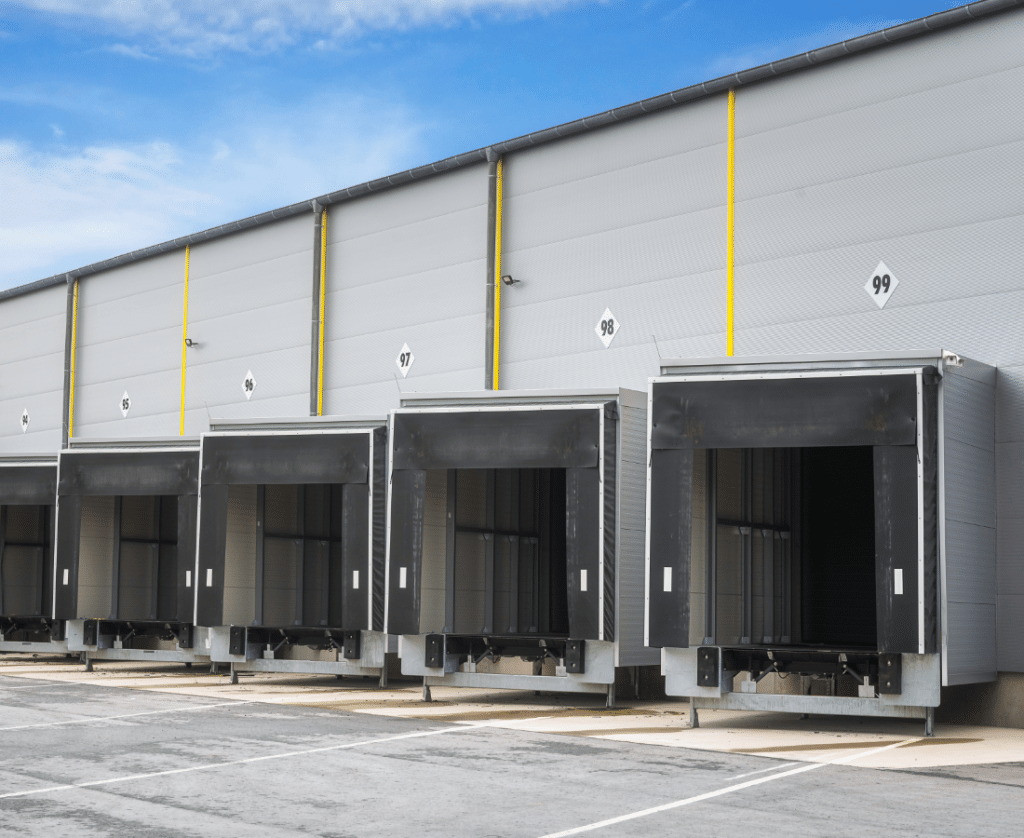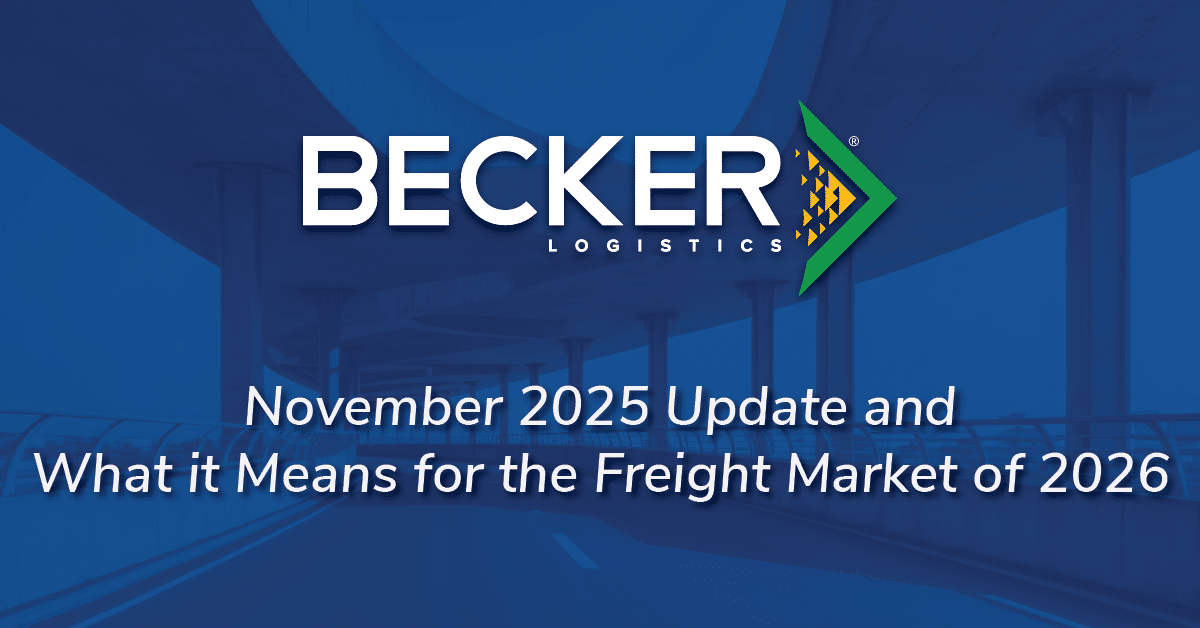As we near the end of 2025, the logistics industry is facing more than the usual seasonal fluctuations. Waves of corporate layoffs, manufacturing slowdowns and a freight market still in correction are converging. It’s all setting the stage for what the freight market of 2026 is shaping up to be.
This is a pivotal planning moment: not just about getting though ‘the now,’ but positioning for what’s next. Because, without a plan your operations are left to the whim of the market. This blog will cover what we are seeing out in the market and how you can put together a plan for success
Corporate Layoffs, Industrial Pullbacks and Demand Ripples
Major cuts at the top
Large corporations are tightening up. For example, Amazon has announced around 14,000 corporate job cuts (with some estimates going as high as 30,000) tied to automation and operational efficiency. Target is eliminating about 1,800 roles to simplify operations. These moves are important signals for freight demand.
Impact on freight flows
Fewer hires in procurement, logistics, fulfilment and retail operations means fewer inbound shipments, slower replenishment cycles, and lower elasticity for freight demand. In essence: the demand side of the freight market is getting squeezed, which matters for the 2026 freight market outlook.
What to watch
- Additional layoffs or restructuring announcements in Q4 and into early 2026.
- Fulfilment network shifts (closed/discontinued facilities) which may reduce freight network complexity.
- How automation and inventory reduction play out in freight volume terms.
Manufacturing, Automotive & Industrial Sector Weakness
Broader manufacturing pull-back
Multiple industrial sectors are showing signs of stress: closures, consolidations and regional job cuts in food & beverage, packaging, building materials, and more. These trends reduce the origin volume base for freight.
Automotive/parts supplier bottlenecks
EV investment, weaker consumer demand and parts-supplier strain are leading to reduced output and fewer freight moves from traditional automotive hubs, another factor that weighs on the freight market of 2026.
Freight-network ramifications
- Origin zones tied to manufacturing face higher risk of volume decline.
- Long-haul industrial lanes may remain soft longer than expected.
- Carriers and 3PLs must be alert to volume-erosion risk in these sectors.

Freight Market of 2026: Volume, Capacity & Rate Outlook
Current state and trendline
Industry forecasts suggest that while volumes remain weak now, the market is gradually rebalancing. According to ACT Research, the industry is entering 2026 with “cautious stabilization” rather than full recovery.
Capacity correction and rate signals
Capacity exits and tighter fleet discipline are emerging. For instance, fleets are more focused on replacement rather than expansion. This supports the thought that the freight market in 2026 may benefit from fewer excesses. Spot-rate models project modest rate gains (~2% y/y) for 2026, driven more by supply limits than demand surges.
Local/distribution vs long-haul divergence
The split remains and likely will into 2026, shorter-haul/distribution flows are holding up better, while industrial/long-haul lanes carry more risk.
Implications for 2026
- Rate recovery is likely to be modest, not dramatic.
- Volume growth may be flat or low-single-digits unless macro or policy tailwinds emerge.
- Network strategies will pivot around managing cost, utilization and risk more than chasing growth.
Policy, Trade & Macro Headwinds Influencing Freight Market of 2026
Trade, tariffs & equipment cost
Tariffs on trucks/components, regulatory uncertainty, and high equipment costs are clouding planning. These pressures delay fleet renewal, slow carrier investment, and in turn affect capacity in the freight market.
Consumer spending & fiscal risks
Risks such as benefit-program disruptions (ex: SNAP), weak manufacturing jobs, and high inflation mean consumer-goods demand may underperform. Because consumer freight drives many networks, the freight market of 2026 remains exposed to fiscal shocks.
What to monitor
- Tariff/trade policy announcements and their freight knock-on effects.
- Consumer spending indicators, especially in essential goods, are early signals for freight demand.
- Equipment-order trends, fleet-age profiles and investment cycles.
- Regulatory announcements (emission standards, etc) and infrastructure funding.
Planning for the Freight Market of 2026: Strategic Actions
Shippers
- Lock in contracts now with flexibility for 2026; expect modest rate uplift rather than steep increases.
- Review lane risk: identify long-haul/industrial lanes with highest downside exposure and map alternatives.
- Build flexibility: shorter contract cycles, contingency carriers, seasonal surge buffers.
Carriers
- Focus on asset efficiency: retire older equipment, optimize utilization over expansion, manage cost structure.
- Prioritize lanes with resilience. Distribution, regional, niches over long-haul commodity corridors.
- Monitor policy/regulatory environment and plan capital spend carefully.
3PLs and logistics providers
- Emphasize data-driven scenario planning so that you can adjust to changes easily.
- Provide clients insight into origin-industry risk (manufacturing pullbacks, automotive shifts).
- Offer network agility and cost-risk mitigation services rather than just rate negotiation.
Conclusion
The freight market 2026 will not look like the pre-pandemic boom, nor will it be a sharp rebound. Instead, the coming year is likely to be one of structural adjustment. Capacity aligning with demand, industries reshaping freight patterns, and networks evolving for lower-growth conditions.
For Becker Logistics and the professionals we serve, this is a moment to shift from reactive tactics to forward-looking strategy. Let’s lean into 2026 with clarity, disciplined networks and proactive planning, not waiting for the rebound to happen, but preparing for how it will unfold.




